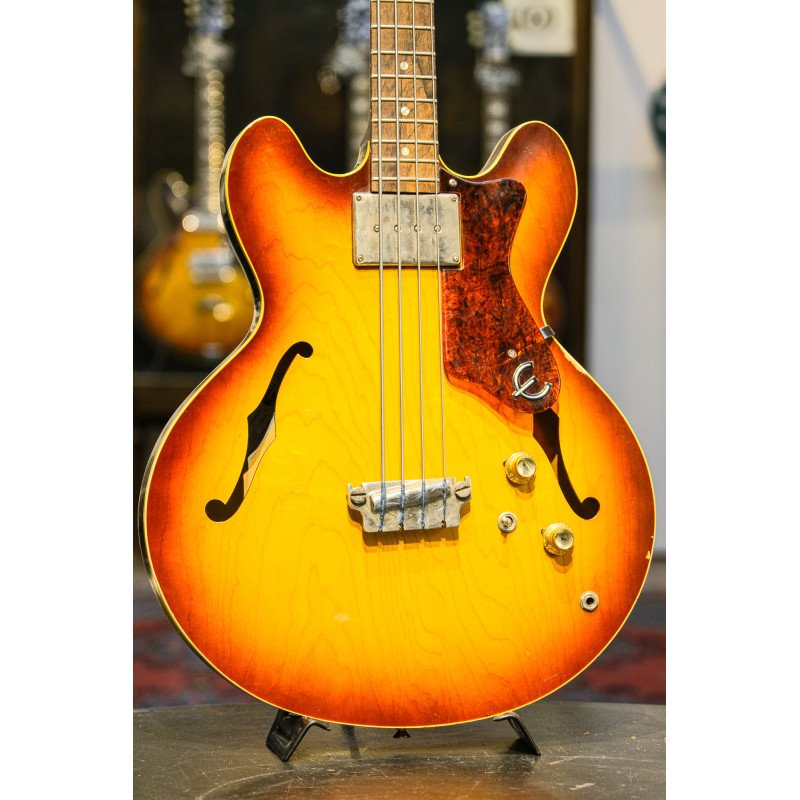
1964 Epiphone Rivoli Model EBV 232 sunburst
kr39,000.00
(tax incl.)
The Rivoli proved especially popular with 1960s British bassists such as The Animals' Chas Chandler
Good condition, 6/10, Made in USA.
The back of both the neck and body have been refinished, all original parts except for a really nice repro pickguard (180USD on eBay), 2 silver top knobs, one large neck position humbucker, including original softshell case including a coiled black cable and a strap from the era, more info:
Has the earlier and far more desirable nut width of just over 1 11/16 inches (this was changed soon after in 1965 to a rather skinny 1 1/2 inches). Single-bound laminated maple top, back, and sides. One-piece mahogany neck, rosewood fretboard with 20 original jumbo frets and inlaid pearloid dot position markers and a short scale length of 30 1/2 inches. Headstock with inlaid pearl "Epiphone" logo and vertical 'cloud' pearl inlay. Two-on-a-side Kluson right-angle tuners with large cloverleaf metal buttons. Single multi-magnet, double-coil humbucking pickup with four polepieces, as played by Chas Chandler of The Animals. "Epi's first electric bass, the Rivoli, debuted in 1959, and it was the equivlent of Gibson's EB-2, a semi-hollowbody archtop modeled after the Gibson ES-335 and Epi Sheraton." (Walter Carter. Epiphone The Complete History, p.68.) "The New York-based Epiphone company was bought by Gibson in 1957. One of the first so-called 'Gibson Epiphone' products was the Rivoli Bass of 1959, virtually identical to Gibson's EB-2. At first it was offered in natural or sunburst, later in cherry, and a two-pickup version was issued in 1970...The Rivoli proved especially popular with 1960s British bassists such as The Animals' Chas Chandler" (Tony Bacon and Barry Moorhouse, The Bass Book, p. 19). "The U.S.-made Epiphone line from the '60s included the solidbody Newport and Embassy Deluxe basses, but the best known Epiphone 4-string of that era was the semi-hollow, short-scale (30 1/2") Rivoli. Only the shape of its headstock and the big "E" on the pickguard distinguished it from the Gibson EB-2." (Jim Roberts, American Basses, p.49). (#2252)





























































